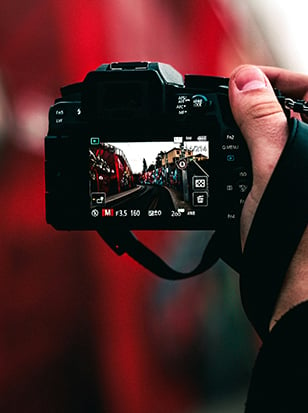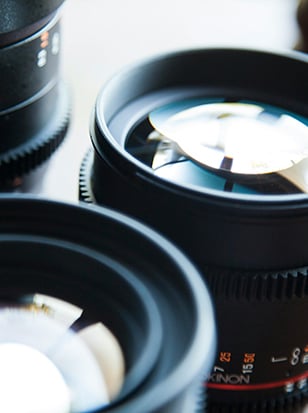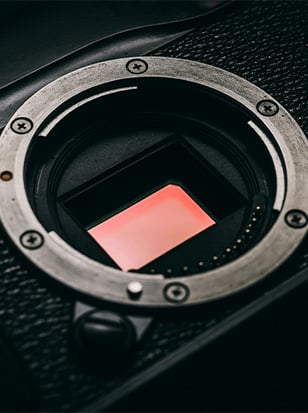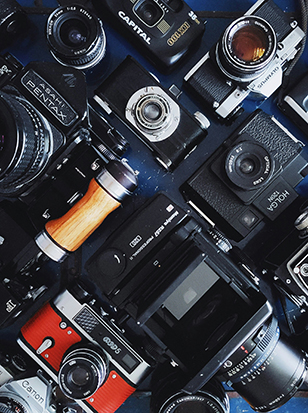
The best accessories for landscape photography can make life a great deal easier out in the field. Whether it’s by controlling light, keeping your camera dry, keeping your devices charged or whatever else accessories provide all sorts of benefits to the roaming landscape photographer. In this guide, we’re going to take you through a range of accessories no committed landscape shooter should be without.
One thing to establish — we’re going to assume that if you’re here, you’re already sorted for a camera, lens and tripod. This guide is concerned with smaller accessories that you might not have considered, assuming you have the basics covered. If you are still looking to build your landscape photography setup, then you’ll want to check out our guides to the best camera for landscapes, best lens for landscapes and best photography tripods.
Otherwise, read on as we take a closer look at the best accessories that landscape photographers should never be without…
Our top picks
3 Legged Thing Ellie Short L Bracket - Grey

The 3Legged Thing Ellie Short L Bracket is a universal L-Bracket that can cater for a large range of cameras and to almost any situation. It has been designed to be used in both landscape and portrait whilst maintaining a level plane. It is compatible with standard Arca-Swiss clamps and features two different 2 screw mount slots in the base meaning that it is a truly versatile bit of kit.
£52.00 View
3 Legged Thing Ellie Universal L-Bracket - Copper

The 3 Legged Thing Ellie Universal L-Bracket is the world's most innovative universal L-Bracket. Ellie is a culmination of a year long development process, inspired by the feedback and comments from their customers around the world. Featuring 9 possible configurations, two-axis adjustments allow the bracket to fit almost any camera.
£56.00 View
Pros:
- Enables quick switching between horizontal and vertical orientations
- Flexible camera and system compatibility
- Adapter available for Peak Design Capture Clip
Cons:
- It may seem complex at first
L-brackets are essential as they enable you to quickly change the orientation of my camera from landscape to portrait without affecting the ball head of the tripod. While a standard quick-release plate can be very useful, some find that moving the camera into a portrait position using one of these is awkward, fiddly and has a tendency to off-centre the camera. With an L-Bracket fitted, swapping orientations is the work of moments.
Many L-brackets are made to suit only one make and model of camera — however, the 3 Legged Thing Ellie is a universal design that can be adjusted to fit pretty much anything. This makes it a lot more versatile and well worth the investment. Also, if you use Peak Design’s Capture Clip system, Ellie can be bought with an adapter to seamlessly work with it. You can find the whole Ellie range here.
Urth 77mm Plus+ Magnetic Essentials Kit - UV/CPL/ND8/ND1000

The Urth 77mm Magnetic Essential Kit Plus+ consists of a magnetic adapter ring and four different magnetic filters: the UV Plus+, CPL Plus+, ND8 Plus+ and the ND1000 Plus+ filters. This gives you access to the most important filters that give you many more options as an image maker.
£165.00 View
Kase Revolution Magnetic Circular Filters 82mm Entry Kit

The Kase Revolution Magnetic Circular Filters 82mm Entry Kit provides photographers and videographers with next-generation filters. Each stackable filter is made from tough, Pro HD optical glass and they are each colour-coded to make selecting a filter easier. A new Inlaid Ring is included to prevent vignetting, and a magnetic lens cap and carry pouch help to protect your filters.
£219.00 View
Pros:
- Can create effects not easy to replicate digitally
- Small, light and portable
- Huge range of options
Cons:
- Need to get the right size to fit your lens or holder
- Wide landscape zooms often don’t take circular filters
Filters are a key piece of equipment every landscape photographer should have in their bag, whether that’s an ND, Graduated ND or a circular polariser. They enable us to make small and large adjustments to the look and feel of the image, and in many cases allow us to achieve things that simply can’t be achieved in post-processing, such as smoothing over moving water or cutting out reflections.
Generally, serious landscape photographers will have at least four filters in their kit bag for all outings: a 3-stop ND, a 10-Stop ND, a 0.9 Graduated ND and a circular polarising filter. For more on the best filters for landscapes, see our dedicated lens filters buying guide where we’ve put together a complete rundown.Hahnel Captur Module - Timer

The Hahnel Captur Module Timer features a self-timer, interval timer, long exposure setting and exposure count settings for time-lapse, wildlife, astral and studio photography. It can also be used as a short cable shutter release to eliminate camera shake. This accessory for the Captur will give you endless photographic opportunities and is ideal for time lapse and long exposure photography. AA batteries included.
£39.95 View
Hahnel Captur Module - Pro

The Captur Module - Pro is used as an accessory with the Captur (sold separately) to control the camera wirelessly. The Module Pro can set up your camera to take time-lapse photos, capture fast-moving objects and wildlife. Also included is the Module IR which can trigger the camera when a moving subject breaks the beam. Ideal for wildlife and sport's photography. AA batteries included.
£99.95 View
Pros:
- Brilliant for time-lapse and long exposures
- Wireless and wired compatibility
- Powered by common AA batteries
Cons:
- Need to get the right model for your brand of camera
The avid landscape photographer can find a multitude of uses for a shutter release and intervalometer. You can remotely fire your camera’s shutter, shoot exposures longer than 30 seconds in bulb mode and create great time-lapses using the interval settings. Triggering your camera’s shutter remotely can also be very handy for avoiding the tiny but perceptible amounts of camera shake that can be caused by physically depressing the shutter button — especially handy if you’re shooting a long exposure.
The Hahnel Captur Timer Kit is a brilliant option. Available for Canon, Nikon, Fujifilm, Sony and Olympus/OM System/Panasonic, this intervalometer and remote trigger can connect wirelessly with your camera at ranges of up to 100m, though it also has a cabled mode if you prefer.
Zeiss Microfibre Cloth
This soft 30x40cm Zeiss Microfibre Cloth will remove unwanted dust particles, dirt and fingerprints from your optical equipment. The perfect addition to any photographer or filmmaker's kit bag, this must-have accessory will allow you to keep your equipment clean to ensure you get the highest of picture quality.
£5.00 View
Pros:
- Cheap, simple way to keep your gear clean
Cons:
- Not many!
In landscape photography, Mother Nature is sometimes on your side and is sometimes… not. As such, it’s always a good idea to have a way to keep your gear clean and dry, especially the front element of your lens. Most landscape photographers have learned the value of keeping handy a microfibre cloth like this one from Zeiss. Not only are these useful if it rains but also when working on the coastline, as seawater can sometimes spray onto the lens.
It’s always best to use a dedicated microfibre cloth rather than just any old rag to clean your lenses, as this will protect the delicate coatings on the front elements from being compromised.
Filmsticks Head Mounted Torch
The Filmsticks LED Head Torch provides hands-free lighting with a comfortable headband, perfect for outdoor activities and on-set work. It features five different lighting modes, including strong and dimmed XPG LED lights and red COB LED options. With a rotating lens for adjustable beams and IPX5 water resistance, this torch ensures reliable performance in various conditions.
£19.00 View
Pros:
- Can be lifesaving on dark country roads and paths
- Affordable and portable
Cons:
- Not the most dignified thing to wear (but it is worth it)
The thing about landscape photography is that it’s often done around sunrise and sunset. That’s when you get the most brilliant light, and those spectacular views you just can’t help but capture. However, photographing at these times means you’ll often be walking either to or from your location in the dark. And with many landscape photographs being taken in remote rural areas, there may not be much artificial lighting to speak of.
That’s why a head torch is a good thing to always carry with you. Walking around in the dark can cause accidents, and can be extra dangerous if you have to cross or walk on a road where drivers might not see you. Also, it can be tricky to see your camera controls and tripod locks in the dark, especially if you’re in a hurry to set up before the sun rises. So we’d recommend Filmsticks Head Mounted Torch, which is a great choice — small and affordable, with charging via micro USB.
Peli™ 0915 Memory Card Case
The Peli 0915 Memory Card Case can hold 12 SD cards, 6 mini SD cards and 6 micro SD cards.
£35.00 View
Pros:
- Secure holder for multiple cards
- Shock-absorbing
- O-ring seal keeps water out
Cons:
- Hardshell can make it more awkward to transport
Ideally, landscape photographers should be carrying plenty of memory cards, both as backups and as spares in case you fill one up. What you shouldn’t be doing, however, is carrying them loose in your pockets or camera bag, as this is a tremendous way for them to get lost or damaged. Instead, we’d recommend getting a wallet or holder for them, and if you want the ultimate peace of mind, a hard case like this one from Peli.
Not only does this allow you to organise cards, but also provides them with a hard shell that can take a beating or a soaking. It’s inexpensive too — costing a good deal less than most high-end cards — so there’s really no reason not to snap one up.
Ansmann Powerbank 10.8 Mini - 10000mAh
With a charge capacity of 10000 mAh and an output power of up to 2.400 mA (at 5V DC), the compact powerpack is able to charge mobile devices several times. The high-quality external battery pack with sturdy housing is compatible with all standard USB devices such as smartphones, tablets, mobile phones, MP3 players, navigation units and many other devices that can be charged via USB.
£22.00 View
Pros:
- Super-portable and convenient
- Holds multiple charges
Cons:
- You may prefer a bank that can hold more charge
In an age of constantly advancing technology, smartphones have become a huge part of our lives, to the point where we heavily rely on them. Landscape photographers are no exception, and will tend to use smartphones a lot when working out in the field to check the weather, maps, exposure details and more. Unfortunately, as we all know, battery life is never great, in some cases only lasting a few hours!
That is why we highly recommend buying a power bank to put in your camera bag, so you can charge the battery when it’s getting low. Even if you don’t plan on using the phone for anything photography-related this is a useful thing to have – imagine if you had an accident and you couldn’t contact anyone due to your phone being dead?
The Ansmann Powerbank 10.8 Mini is a simple, portable power bank that allows you to carry around a little extra juice for your devices. While there are other power banks available that provide more capacity, this one offers a good balance between portability and power.

FAQs
What are the must-have accessories for landscape photography?
When it comes to landscape photography, you will want to invest in a sturdy tripod for stability, polarising filters to reduce glare and enhance colours, neutral density (ND) filters for long exposures, and a remote shutter release to minimise camera shake.
Why do landscape photographers use polarising filters?
Polarising filters are designed to enhance landscape photos by cutting through reflections on water or glass and boosting the contrast in skies. They help deepen the blue tones in the sky and make clouds pop, making your scene more vibrant and detailed.
What tripod features are important for landscape photography?
You’ll want a tripod that is sturdy, lightweight, and easy to carry on long hikes. You’ll also want to look for adjustable legs for uneven terrain and a ball head; these allow you to easily adjust your composition.
How do ND filters improve landscape photography?
Neutral density (ND) filters allow you to use longer exposures even in bright conditions, which is perfect for capturing smooth water effects or adding motion blur to clouds. They reduce the amount of light entering the lens without altering the colour balance, giving you more creative control.
Is a remote shutter release necessary for landscape photography?
While not absolutely necessary, a remote shutter release is highly recommended for reducing camera shake when taking long exposures or using a tripod. It helps ensure sharpness by allowing you to trigger the shutter without physically touching the camera, especially useful in low-light conditions.
How do we decide?
Our in-house photography experts, store staff and partners all work collaboratively to pour over our guides and tips articles. We also consider emerging trends and customer feedback to make sure our guides are always up-to-date and reflective of what people are truly looking for. By curating only the best products, our guides provide trustworthy recommendations, making it easier for customers to make informed choices with confidence.
If you would like more advice on any purchase our contact centre staff are here to help. Alternatively, you can reach us via email or social media. And don't forget. If you were to purchase anything based on our recommendations you'll be covered by our full returns policy
Buying Guides











